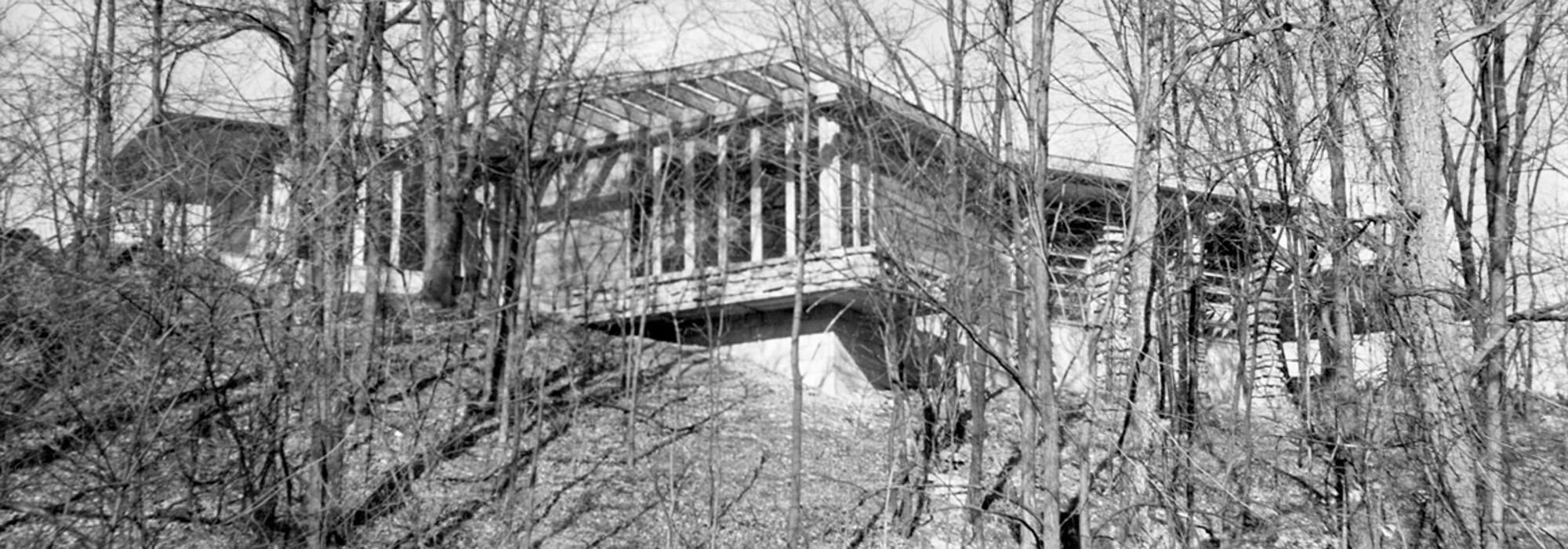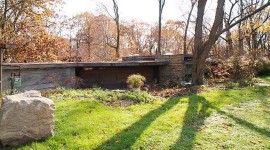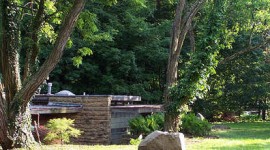Gunning House in Columbus, Ohio, at Risk
Designed by Tony Smith, Theodore van Fossen, and Laurence Cuneo, it stands as an early example of Organic-Modernist architecture. Unfortunately, the site is imminently threatened by sale and likely redevelopment.
The Gunning House is a stunning stone-and-cypress building perched at the edge of a ravine just east of Columbus, Ohio. Built in 1940, the Gunning House, also known as Glenbrow, is located on a 2.5-acre parcel that maintains a rustic ambiance despite its proximity to adjacent commercial development. The house was designed by celebrated architects and designers Tony Smith, Theodore van Fossen, and Laurence Cuneo and stands as an early example of mid-twentieth-century Organic-Modernist architecture in central Ohio.
Like other organically inspired designs, particularly those designed utilizing Frank Lloyd Wright’s philosophies, the Gunning House responds to and grows from its surroundings. The cultural landscape is an important component of the house, exemplified by how the site contributes to the house both as a historic designed landscape and as a largely intact, natural feature untouched by development.
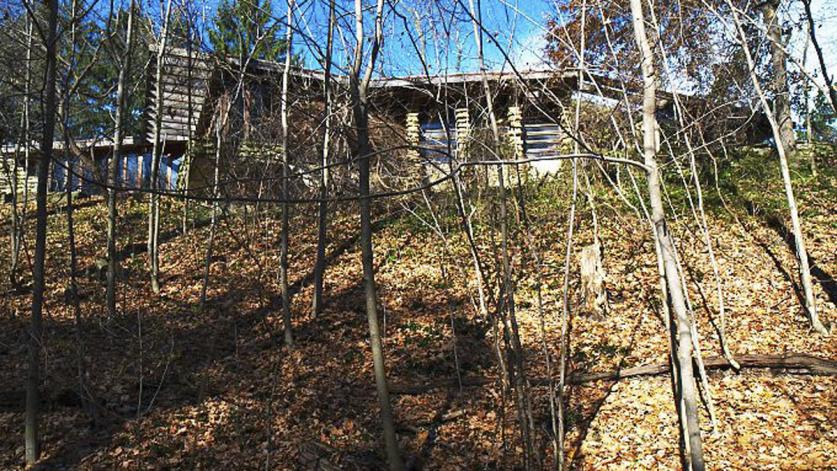
The Gunning House and its landscape are the result of a succinct collaboration between its designers. Tony Smith attended the New Bauhaus in Chicago, Illinois, as an architecture student before taking on a short apprenticeship with Frank Lloyd Wright in 1939. His tenure with Wright lasted less than a year, but it had a strong influence on his early architectural designs. Smith designed fifteen buildings over roughly two decades, the Gunning House being his first architectural commission, before he made a transition to art as his life’s work. In all his designs, Smith sought to convey purified form and color and the outdoors became a significant influence on his later commissions for sculpture. Between 1960 and his death in 1980, Smith produced nearly 50 large-scale, revolutionary and influential works that garnered him international-renown.
For designer Theodore van Fossen, the Gunning House was a catalyst for the advancement of the philosophies of organic architecture. Van Fossen also studied at the New Bauhaus, where he met Tony Smith, and, though he never studied with him formally, worked on several of Wright’s house designs. In 1954, van Fossen completed the first of what would become dozens of organically-designed houses in the newly formed Rush Creek Village. The evolution of his designs for Rush Creek Village in Worthington, Ohio, can be directly traced to the 1940 Gunning House commission.
The residential site slopes downward from the road toward the rear of the property. As a result of plantings, especially large evergreen trees, and the lower elevation, the Gunning House is not visible from the road. A hint of the carport can be seen at the driveway entrance; otherwise the property is completely screened from passing traffic along the heavily traveled road. The immediate setting for the house is picturesque, with it nestled among a mixed hardwood and deciduous forest at the edge of a grassy clearing. Toward the rear of the property, the topography changes dramatically with a steep incline leading
This ravine edge setting provides a dramatic view, borrowing the outside scenery. Facing south toward the ravine, the back of the house features floor to ceiling windows. Stone for the house was quarried onsite and was used for both interior and exterior wall treatments.
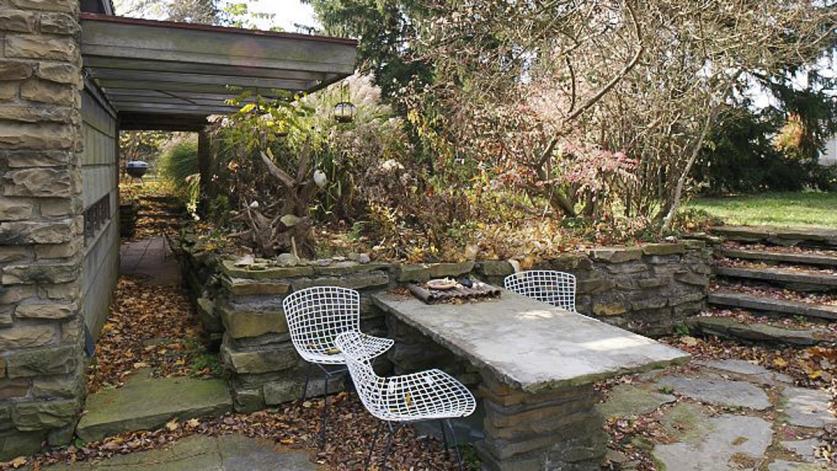
Indigenous stone figures prominently, not just in the construction of the house, but also as a uniting element within the historic designed landscape. These stone landscape features, such as retaining walls and pedestrian-scale furnishings, are further defined by their composition of random courses, similar to the house’s walls and fireplaces. For example, a wall that lines the sidewalk from the carport to the house, retaining walls, a small fountain, and tables can be found punctuating the landscape and employing a common vocabulary used in the construction of the house. Moving down in scale, tables with coursed stone legs and a stone slab top were placed throughout the property, with a large table sited on the patio, and smaller ones installed in quiet seating nodes.
Original designed landscape features included a swimming pool, tennis court, stone walls, a patio, seating nooks, and a fountain. In recent years, the swimming pool has been filled in, and a small pond is now in its place. The tennis court is overgrown with only portions of its paved court and sections of fencing remaining intact.
Threat
Although the Gunning House has suffered some deterioration, and in recent years has evidenced deferred maintenance, the building and landscape still possess a high degree of integrity. The majority of its contributing landscape features remain intact. This property illustrates the integral relationship between landscape and architecture that is the central tenant of organic architectural theory. The Gunning House and its associated landscape are unquestionably eligible for listing in the National Register of Historic Places.
Unfortunately, the site is imminently threatened by purchase of the property for demolition and commercial redevelopment. Located in an area that was once semi-rural, the surrounding vicinity is now predominantly commercial development.
How to Help
For more information or to get involved please contact:
Kathy Mast Kane
Columbus Landmarks Foundation
61 Jefferson Avenue
Columbus, OH 43215-3859
614.221.0227
kmastkane@columbuslandmarks.org



